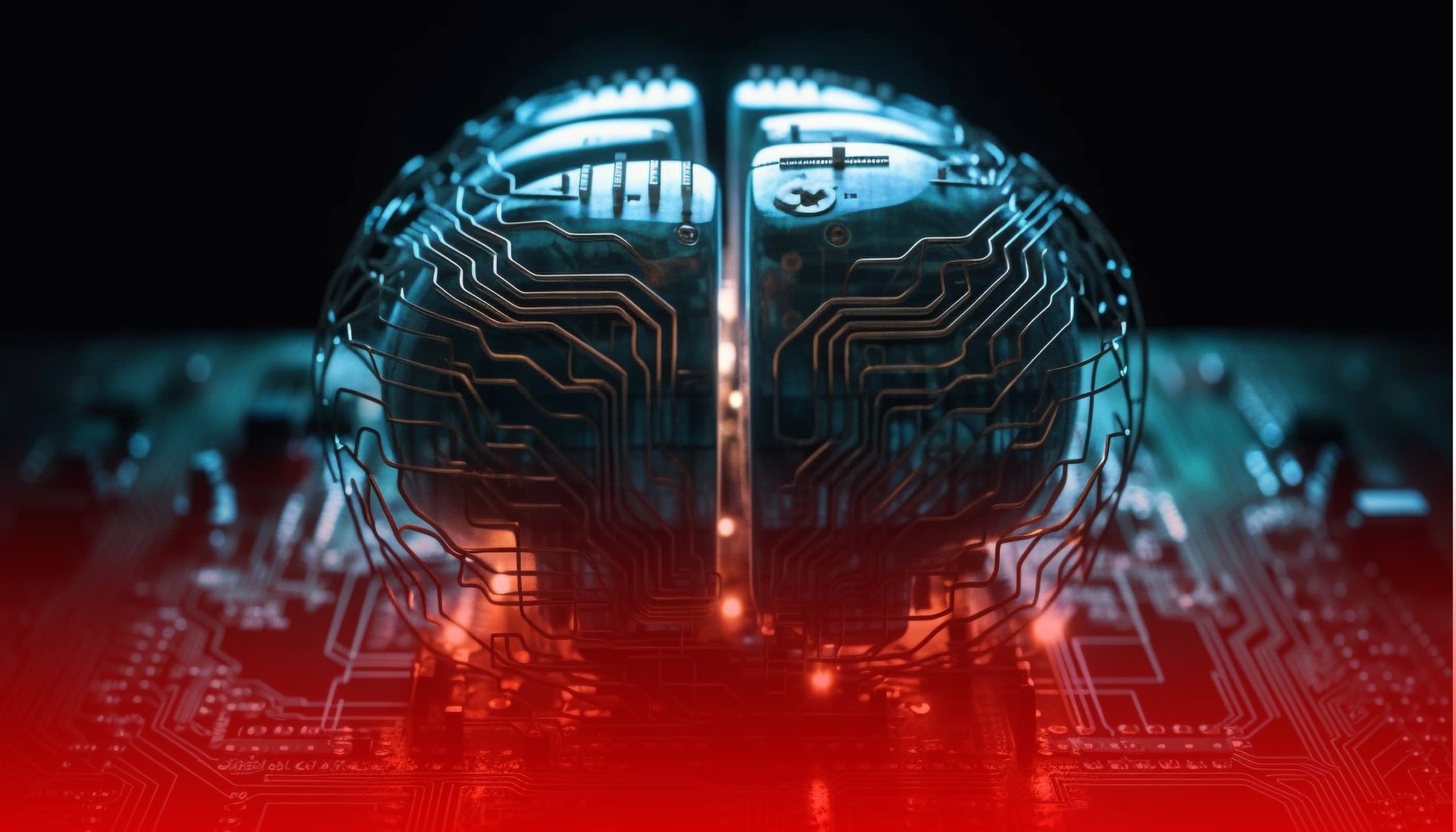Breaking News! 🚨 Top 10 brokers is here! See the most trusted trading platforms of 2024. Go now!
The Role of AI in Trading: Enhancing Decision-Making and Efficiency
Delve into the transformative role of artificial intelligence (AI) in trading, exploring its potential to revolutionize decision-making processes, enhance efficiency, and drive profitability in financial markets.
2 years ago, Mar 31, 11:07 am

Artificial Intelligence (AI) has revolutionized the landscape of financial markets, particularly in trading operations. AI technologies, including machine learning algorithms and deep neural networks, are increasingly being deployed to analyze vast amounts of data, identify patterns, and make informed trading decisions in real-time. From algorithmic trading to sentiment analysis, AI applications in trading have become indispensable tools for market participants seeking to gain a competitive edge.
Analysis of AI’s Impact on Decision-Making Processes
The integration of AI has brought about a profound transformation in decision-making processes within the realm of trading. AI algorithms have the capacity to ingest vast volumes of data from various sources, including market feeds, news articles, social media platforms, and economic indicators. Through sophisticated data analysis techniques such as natural language processing (NLP) and sentiment analysis, AI can distill this information into actionable insights, enabling traders to make more informed and timely decisions.
Moreover, AI’s ability to detect patterns and trends in historical data sets allows traders to identify potential market opportunities and anticipate price movements with greater accuracy. By leveraging machine learning algorithms, traders can develop predictive models that forecast market behavior based on past trends and current conditions. These models not only aid in identifying entry and exit points for trades but also help in assessing risk and optimizing portfolio allocation strategies.
Furthermore, AI-driven decision-making processes are characterized by their adaptability and responsiveness to changing market conditions. Through continuous learning and refinement, AI algorithms can adjust trading strategies in real-time based on incoming data and feedback. This dynamic nature enables traders to stay ahead of market trends and capitalize on emerging opportunities, while simultaneously mitigating risks associated with volatile market conditions.
In essence, the impact of AI on decision-making processes in trading extends beyond mere automation; it empowers traders with advanced analytical capabilities and predictive insights, thereby enhancing their ability to navigate complex financial markets with confidence and agility.
Evaluation of AI’s Efficiency in Trading Operations
The efficiency of AI in trading operations is reflected in its ability to streamline processes, optimize resource utilization, and deliver superior performance outcomes. AI-powered trading systems exhibit several key attributes that contribute to their efficiency and effectiveness in executing trades:
- Speed and Scalability: AI algorithms can process vast amounts of data and execute trades at speeds far exceeding human capabilities. This high-speed processing enables traders to capitalize on fleeting market opportunities and execute trades with minimal latency.
- Precision and Accuracy: AI-driven trading systems are designed to execute trades with precision and accuracy, minimizing errors and slippage in order execution. By analyzing market data and identifying optimal entry and exit points, AI algorithms can optimize trade execution to maximize returns and minimize risk.
- Adaptability and Flexibility: AI-powered trading systems are inherently adaptable and flexible, allowing them to adjust trading strategies in response to changing market conditions. This adaptability enables traders to capitalize on evolving market trends and adjust their strategies accordingly, ensuring optimal performance in dynamic market environments.
- Automation and Autonomy: AI-powered trading systems can automate repetitive tasks and decision-making processes, reducing the need for manual intervention and oversight. This automation frees up traders’ time and resources, allowing them to focus on higher-level strategic activities and decision-making tasks.
Overall, the efficiency of AI in trading operations lies in its ability to enhance speed, precision, adaptability, and automation, thereby enabling traders to execute trades more effectively and achieve superior performance outcomes in financial markets.
Discussion on Emerging Trends and Advancements in AI Technology for Trading
The landscape of AI technology in trading continues to evolve rapidly, with emerging trends and advancements reshaping the way financial markets operate. One notable trend is the increasing adoption of deep learning techniques, particularly neural networks, in trading algorithms. These advanced models have demonstrated superior performance in analyzing complex market data and identifying non-linear patterns, leading to more accurate predictions and better decision-making.
Another significant trend is the integration of natural language processing (NLP) and sentiment analysis into trading algorithms. By analyzing news articles, social media feeds, and other textual data sources, AI-powered systems can gauge market sentiment and assess the potential impact of news events on asset prices. This enables traders to make more informed decisions and react swiftly to market-moving events.
Additionally, there is a growing emphasis on the use of reinforcement learning algorithms in trading. These algorithms learn through trial and error, iteratively refining trading strategies based on feedback from market outcomes. Reinforcement learning offers the potential to develop adaptive trading systems that can dynamically adjust their behavior in response to changing market conditions, thereby enhancing performance and resilience.
Furthermore, advancements in cloud computing and data analytics infrastructure are facilitating the development and deployment of AI-powered trading systems at scale. Cloud-based platforms provide access to vast computing resources and data storage capabilities, enabling traders to leverage AI algorithms for complex analysis and decision-making tasks without the need for significant upfront investment in hardware or software infrastructure.
As AI technology continues to advance, we can expect further innovations in areas such as predictive analytics, anomaly detection, and automated trading strategies. These advancements have the potential to revolutionize trading practices, offering new opportunities for alpha generation and risk management in financial markets.
Considerations for Implementing AI Strategies in Trading Practices
While the adoption of AI strategies in trading practices holds great promise, it is essential for market participants to consider several key factors before implementation. One crucial consideration is the quality and reliability of data used to train AI models. Garbage in, garbage out (GIGO) applies here; if the input data is flawed or biased, the output predictions and decisions will be similarly flawed. Therefore, traders must ensure that their data sources are accurate, comprehensive, and free from biases.
Another consideration is the interpretability and explainability of AI models. As AI algorithms become increasingly complex, understanding how they arrive at their decisions becomes more challenging. This lack of transparency can pose risks in trading environments where regulatory compliance and accountability are paramount. Traders must balance the benefits of AI-driven insights with the need for transparency and accountability in decision-making processes.
Furthermore, traders must consider the potential for overfitting and data snooping bias when developing AI trading strategies. Overfitting occurs when a model learns to memorize noise in the training data rather than identifying genuine patterns. To mitigate this risk, traders should employ robust validation techniques, such as cross-validation and out-of-sample testing, to assess the generalizability of their AI models across different market conditions.
Moreover, traders must recognize the limitations of AI technology and avoid overreliance on automated trading systems. While AI algorithms can enhance decision-making processes and improve efficiency, human judgment and expertise remain essential for navigating complex market dynamics and unforeseen events. Therefore, traders should view AI as a tool to augment, rather than replace, human intelligence in trading practices.
Conclusion
AI plays a pivotal role in modern trading practices, offering unprecedented capabilities for decision-making, efficiency, and innovation. As AI technologies continue to evolve, traders must stay abreast of emerging trends and advancements to remain competitive in dynamic financial markets. By harnessing the power of AI responsibly and integrating it into trading strategies effectively, market participants can unlock new opportunities for generating alpha and achieving long-term success.
Get SCTA's daily newsletter in your inbox every weekday.
You may unsubscribe at any time.
